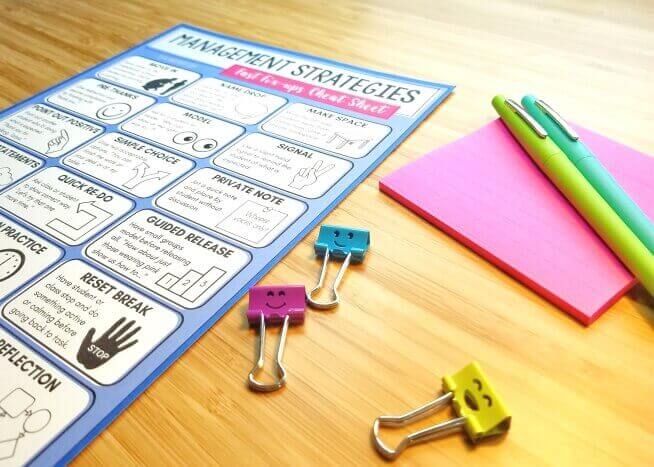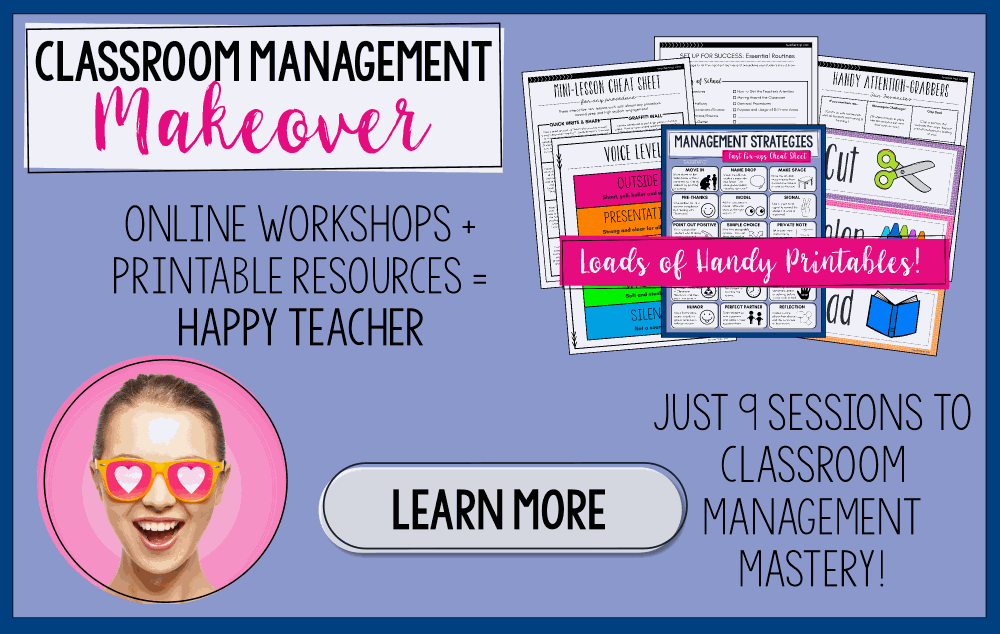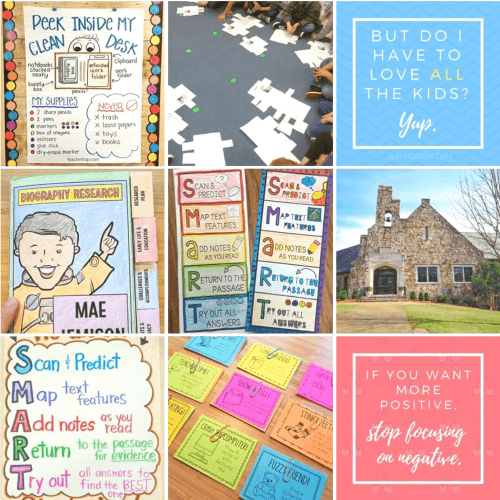So many classroom management strategies are designed to help teachers once the problem has already happened. But how about we start avoiding those problems in the first place! Here are 5 SUPER-POWERED strategies that can help you PREVENT management problems.

1. Cloze First
Cloze Statements are simply phrases or statements where students are given part of the sentence and asked to fill in the blanks. Reading teachers will be familiar! I love using Cloze Statements BEFORE transitioning into any new activity. They are perfect for reviewing expectations for each part of the day.
For example, before sending students off to begin Silent Reading, I might quickly review our expectations (which are posted on a simple anchor chart on the wall). I read the first part and students complete the statement.
Choose a… smart spot!
Get started… right away!
Focus on... my reading!
Read the… whole time!
This activity is fun, quick, and simple, but also a great way to remind students of the expectations before transitioning. Why not take 60 seconds to avoid potential misbehaviors that could waste far more time!?
2. Guided Release
My Guided Release strategy takes just seconds and can prevent all kinds of issues later. Before you begin a classroom activity, especially one where you know problems might arise, slow down and send only a few students at a time to begin the task.
Let’s say you’ve just finished a writing mini-lesson and are about to send students off to do their independent writing. Instead of sending the whole class at once, ask for a few volunteers that can model what needs to happen next.
Who can show us how to quietly get our writing materials, choose a spot, and get started right away?
As the first few students move, ask the rest of the class what they notice. Students might point out that a student is walking, another is choosing a smart spot, another got started right away.
Next, ask for a few more volunteers and send the next group while the remaining students continue to watch. Sometimes I’ll hand-pick students and other times I’ll say things like “All of my friends who are wearing red, please show us how to…”
This strategy works great before any transition to a new space or activity. Not only does it slow the pace and keep students from rushing or playing around, it also gives those who need a quick model of what should happen next.

3. Move In
I refer to this next strategy as “Moving In” but you might also know it as “using proximity.” The idea here is to move closer to where a potential issue is brewing so that students can feel your presence without you actually speaking or intervening.
I find that this strategy is SO simple and easy that we often forget about its power. Our natural instinct is to avoid or move away from classroom issues we don’t want to deal with, but often just by being nearby, we can diffuse or prevent a problem.
The reason I love this strategy so much is that it allows students the chance to fix up their own behavior without teacher intervention AND it can be done without you having to stop instruction.
4. Point Out the Positive
As teachers, we are trained to notice what has gone wrong. We can quickly look at student work and identify the deficits, and we can easily spot the off-task student in a room full of hard-workers.
With the “Point Out the Positive” strategy, the idea is to focus our attention on what is going well and highlight that for the rest of the class. For example, if the whole class is talking when you ask them to line up, you’ll want to look for the students who ARE quiet and ready.
Thank you to my friends who have lined up quietly.
When you point out what is going right, many students will automatically follow suit. I also find that the more I focus on positive behaviors, the more positive behaviors I get!
5. 'Hands On Head' Check-In
The “Hands On Head Check-In” is one of my favorite classroom management strategies for keeping things running smoothly. This strategy is for times when you’ve given directions, started an activity, but notice that many students aren’t quite doing what they are supposed to be doing.
First, I use my attention-getter and follow it with “Hands On Head!” Students must put down whatever is in their hands, place their hands on their head, and turn to look at me.
Once I have everyone’s full attention, I can quickly review expectations, ask a student to model what should be happening, or model it myself. Hands stay up until I know we’re ready to begin again.
The Classroom Management Makeover Course
The strategies in this blog post come from my Classroom Management Makeover Course. (Use code CMMSAVE20 to save 20% today!) This program includes video workshops, guides, cheat sheets, and classroom materials that will help you prevent most student behavior issues, redirect with ease, and find success with your most challenging students.
Classroom Management Makeover is not about implementing another set of punishments and rewards. It’s about creating a well-run classroom that empowers learners and allows the teacher to love teaching again!










